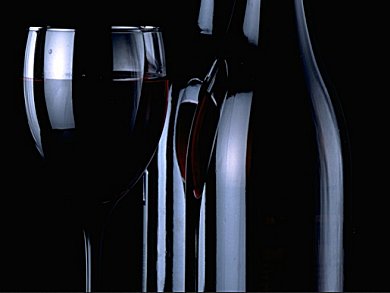Deceived wisdom abounds regarding red wine, its bouquet, palate, after-taste and other aspects. Many of them rely on the subjective nature of the taster’s opinion for their sustenance. However, chemistry can provide definitive answers regarding the molecular components of a specific full-bodied red regardless of how much poetic license is used to describe it on the label or by those imbibing the grape-derived beverage.
Indeed, Jean-Christophe Barbe of the University of Bordeaux and INRA in Villenave d’Ornon, France, and his colleagues with financial support from the Bordeaux Wine Council (Conseil Interprofessionnel du Vin de Bordeaux, CIVB), have turned to high-performance liquid chromatography (HPLC) to investigate the chemical nature of organic extracts from red wine. Critically, HPLC preserves the aromas while allowing different fruity characteristics to be isolated in different fractions. The researchers obtained 25 different fractions, which could be recombined in different ways to reproduce the aromatic notes of the original samples of red wine.
The team demonstrated, however, that it was not necessary to re-incorporate all of the extracted components to generate the overall expression and fruity aromas of the wine, but some particular compounds were essential to the characteristic aroma of a given wine. For instance, the compound ethyl-2-hydroxy-4-methylpentanoate must be present to enhance any blackberry or fresh-fruit aromas. Moreover, almost imperceptible levels of the following fractions – diacetyl, acetoin, acetic acid, and γ-butyrolactone – present at between 2 and 40 % of their perception thresholds had an additive effect on enhancing the jam-like fruity aromas. This is despite the fact that any fruity or indeed other aroma can be detected consciously by testers at such low levels.
Until now, it is only the alcohol, esters, acids, aldehydes, ketones, thiols, lactones found in wine that have been demonstrated to contribute directly to the aroma of this highly complex mixture formed by fermentation and aging of the juice of grapes. The discovery that compounds present below the threshold of detection somehow add to the aroma lends support at least in part to some of the affectations of the more poetic tasters. After all, sensory thresholds may be lower for some people than others. The research also suggests that our sense of smell is an even more complex system than the simple model of an odor molecule slipping key-like into the receptor lock would otherwise suggest. One might logically assume that a strong odor would saturate the olfactory senses so that lower notes could not be heard, just as the sound of a jet aircraft will drown out even the most insistent beat from one’s mp3 player. The fact that some undetectable compounds seem to boost the aroma of others present hints at the possibility of various synergistic effects perhaps the notion of complex aromas being like a skeleton key to pick the nose is closer to the truth.
“The findings in this work are very important as they illustrate that it is not only the compounds with low perception thresholds that influence the smell of wine but also other compounds,” adds Yorgos Kotseridis of the Agricultural University of Athens, Greece. “The synergy phenomena are explained here and the important role of some common wine chemicals is also mentioned. The next step will be to identify other compounds playing important roles in enhancing fruity or other positive aromas and why other compounds can ‘erase’ negative aromas.”
Of course, despite all the chemical analysis, when the cork is pulled it is the effect on our senses, the pleasure of the color, the bouquet, the taste, of the wine, and its alleged health benefits that are most important. Oh, that and the matter of the ethanol content and its impact on the human psyche.
- Impact of Perceptive Interactions on Red Wine Fruity Aroma,
Georgia Lytra, Sophie Tempere, Gilles de Revel, Jean-Christophe Barbe,
J. Agric. Food Chem. 2013.
DOI: 10.1021/jf302918q
Readers might be interested to know that I debunk the myth of removing the cork to “air” a bottle of wine in my new book, Deceived Wisdom – http://sciencebase.com/dw
Also of interest:
- Sparkling Wine, Champagne & Co,
Klaus Roth,
ChemViews magazine 2010.
DOI: 10.1002/chemv.201000042 - Chemistry of a Hangover — Alcohol and its Consequences,
Klaus Roth,
ChemViews magazine 2012.
DOI: 10.1002/chemv.201000074


